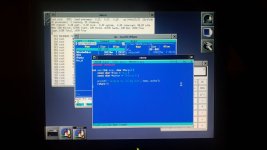Can anyone recommend a good modern(ish) linux distribution for Pentium II class machines?
By utility I mean wide hardware support and being able to image ancient scsi disks, mount a variety of filesystems, check out various PCI and ISA cards, etc.
By modern I mean features like python more recent than 1.x, etc.
My pentium III 450mhz/256mb ram is my fastest system that still has a full compliment of legacy ports and I find these type of activities much easier in linux than in WIndows 2000 or XP. I tried a version of Puppy Linux based on Xenial and encountered a panic on boot because it does not understand my Adaptec 2940...
thanks
mike
By utility I mean wide hardware support and being able to image ancient scsi disks, mount a variety of filesystems, check out various PCI and ISA cards, etc.
By modern I mean features like python more recent than 1.x, etc.
My pentium III 450mhz/256mb ram is my fastest system that still has a full compliment of legacy ports and I find these type of activities much easier in linux than in WIndows 2000 or XP. I tried a version of Puppy Linux based on Xenial and encountered a panic on boot because it does not understand my Adaptec 2940...
thanks
mike


